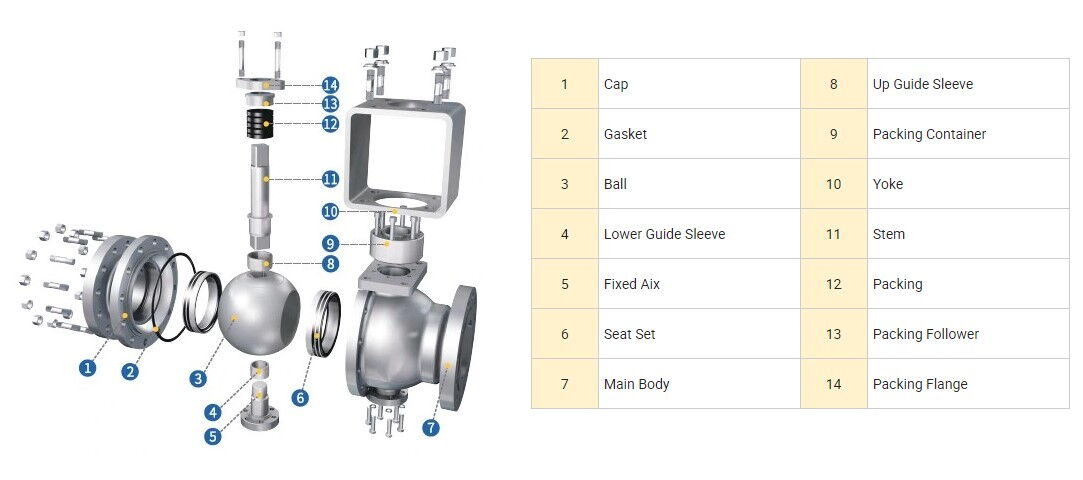Product Name: Fixed Ball Control Valve
Type: Fixed Ball
Body Material: ASTM A216 WCB
Size: 10 Inch, DN250
Pressure: Class 150 LB, PN16
End Connection: Flanged
Actuation: Pneumatic Actuator
Flow Characteristics: Quick Open
Product Range
Standard: ASME, DIN, JIS, GB, etc
Body Material: Carbon Steel, Stainless Steel, Alloy Steel
Size Range: 2-12 Inch, DN50-DN300
Pressure Rating: PN10-PN160, Class 150-900 LB
Medium: Water, Oil, Gas, Acid
Working Temperature: -29°C to +560°C
End Connections: Flnaged, Welded, Threaded
Leakage Class: Fci 70-2 Class V, Class VI, Zero Leakage
Actuator Options: Spring Return or Double Acting Pneumatic Actuator
Travel: 90°
Air Pressure: 0.4-0.6 MPa
Optional Accessories: Volume Boosters, Position Transmitters, Limit Switches, Solenoid Valves, Handwheels, etc
Fixed Ball Control Valve Features
The fixed ball control valve, designed for high-pressure and large-diameter applications, offers two distinct configurations based on the placement of the valve seat sealing rings: one with the seat sealing in front of the ball and another with the seat sealing behind the ball. Here are the enhanced features of the fixed ball valve:
1. Advanced Seat Design: The valve seat is engineered with extensive experience to ensure a reliable seal, a low friction coefficient, and minimal operating torque. A variety of seat materials are utilized to cater to different operational needs.
2. Error-Free Operation Handle: The flat head stem is employed to prevent misalignment in the handle's connection, ensuring that the state of the handle accurately reflects the valve's position.
3. Locking Mechanism: To prevent accidental operation, the valve features locking holes when fully open, ensuring that the valve remains in the correct position and reducing the risk of misoperation.
4. Stem Anti-Flying Feature: The stem is secured to prevent it from being forced out by pressure, and in the event of a fire, metal-to-metal contact can be established to ensure the stem's seal integrity.
5. Anti-Static Performance: Springs are installed between the ball, stem, and valve body to dissipate static electricity generated during the switching process, enhancing safety.
6. Fire-Safe Construction: The design of various components, including the ball and valve body, middle flange, stem, and valve body, meets stringent fire resistance standards, complying with API 6FA and API 607 requirements.

